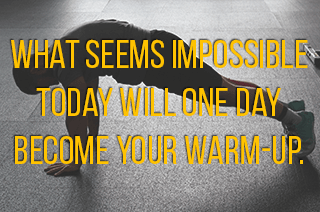Women Self Defense
8 Questions to Ask Before Signing Up for a Self-Defense Class
The time has come.
You watched the local news last night and heard about a woman across town who was attacked and robbed while walking to her car.
You think, “Wow. What if that happens to me? I really should learn some self-defense moves!”.
But where do you begin?
Do you just Google the closest gym and see if they offer some self-defense classes?
Before you hand over your hard-earned money to the nearest facility, consider the answers to these questions.
1. How Qualified Is the Instructor?
The first thing you need to do is investigate your potential instructor. What kind of training did he or she receive? How long has he trained? How long has he taught? What kind of real-world experience does he or she have?
These days, nearly anyone can advertise themselves as a “self-defense instructor” but that doesn’t mean they’re adequately trained or have any real-world experience.
Ask for a copy of their training credentials, work experience, and awards. Also ask for at least 5 previous clients’ testimonials. Get their contact info and contact them directly, if possible. It’s more trustworthy than hearing kudos second-hand.
2. What Techniques are Covered in the Training?
Many instructors have varying levels of martial-arts training, but training solely in martial arts doesn’t necessarily mean they are adept at self-defense. Self-defense can incorporate martial-arts techniques, but the training and goals are different among the two.
Does the training involve the use of punching bags, focus pads, and other equipment? When preparing for the possibility of an attack, you need to practice hitting, punching, and kicking real objects to simulate that real-world scenario.
3. What Kind of Mental Training is Included?
It’s great to be able to kick, punch, and take down an attacker, but if you can’t control your mind and emotions and stay calm, all of your physical training might very well be completely useless.
The mental part of self-defense is even more important than your physical prowess. Every encounter is as much a mental game as it is a physical altercation, and many times, even more so.
How much time and training is given on developing muscle memory? Muscle memory allows you to execute the actions you’ll need before your “thinking brain” even kicks in. With proper training, you’ll move quickly and efficiently before you’ve even had the chance to think, “Oh yeah – I should do this!”. You just do it instinctively.
4. Can You Really Fit Their Schedule into Yours?
If you’re like most people, you’re pretty busy. It’s normal to start out thinking, “I’m going to fit these classes into my already-busy schedule! I can do it!”.
So, you sign a contract, hand over your bank account information, and – what do you know? Life gets in the way. The kids need rides to soccer practice, the dog gets sick, your friend needs your help, and on and on.
You realize that you’re locked into this monthly fee for a class you haven’t even been able to attend!
 Be realistic about whether or not you’ll be able to attend the classes you’re paying for.
Be realistic about whether or not you’ll be able to attend the classes you’re paying for.
Gyms and classes know that most people start out with a gung-ho attitude, so it’s easy to get people to sign a contract with their membership. Statistics show, however, that less than 29% of people will still show up a mere 6 months later. This happens even though they’re still typically paying that membership fee every month for their yearlong commitment.
Advanced Fighting Systems understands that life gets in the way, so we made it easy to train on your own schedule. With online training, you can train whenever you have some downtime, but, with the Warrior membership, you still get an individualized training program designed just for you from a highly experienced instructor.
5. Consider the Time Frame and Extra Expenses
When you consider signing up for a self-defense class, you need to know how long it generally takes to acquire the skills you need to be able to defend yourself in any real-life situation. Does the class you’re considering end in a month? 6 months? A year?
Does it cover all the valuable techniques you’d like to learn?
A month-long class for $69 might seem like a good deal, but when you take into account that you’ll need, for example, 8 months of classes to become proficient in all the skills you want to learn, you need to consider the total cost of your training. (In our example, you’d be paying $552.00).
Also consider all the extra expenses. Add up the cost of gas you’ll need to drive there and back 2-3 times a week. Will you be buying or renting any equipment, gloves, or uniforms? Will you be enticed to spend on snacks, drinks, or those fancy massage chairs while you’re there? Will you need to pay a babysitter so you can train? Add it all up…
6. Consider the Size of the Class
If you join a group class, make sure you know ahead of time how many students will be in it. The smaller the class, the more personal attention and practice time you’ll get.
You don’t want to join a class with 30 students so that the teacher is always helping someone else while you’re left standing on the sidelines watching. Yes, you can learn that way, but you’ll learn better and faster when your instructor has time to help you.
A great instructor will point out things you probably won’t notice. Maybe you’ve got the wrong angle, your pace isn’t quick enough, etc. If there are too many students, that instructor won’t be noticing your technique very much or helping you to improve it. He’ll be busy trying to watch and help 29 other people.
7. Who’s There to Train With?
If you’re female, you’ll want to train with some men to mimic those real-world situations. Men are generally taller and stronger, so practicing your techniques with men as well as women will hone your skills and enable you to deal with any situation that arises.
If you join a class that only includes one gender, you may not be able to get the full extent of the training and practice you need.
8. How Personalized Is It?
Have you ever joined a fitness class and there’s one mode of instruction for everyone? Maybe it’s geared toward fit people, so those who are just beginning struggle enormously and feel tortured during the entire class.
When considering a self-defense class, make sure the training can be adapted and personalized specifically for you – where you are now and where you want to be.
 Furthermore, say you have some special concerns. For example, if you’re a surgeon or pianist, you’ll want to train, but you need to protect your hands. If you’ve got a bad knee, you want your instructor to provide training that will cater to that injury. If you haven’t gotten off the couch much in the last 6 years, you’ll want a regimen that starts slowly and builds your endurance, strength, and skills gradually.
Furthermore, say you have some special concerns. For example, if you’re a surgeon or pianist, you’ll want to train, but you need to protect your hands. If you’ve got a bad knee, you want your instructor to provide training that will cater to that injury. If you haven’t gotten off the couch much in the last 6 years, you’ll want a regimen that starts slowly and builds your endurance, strength, and skills gradually.
A personalized program will make your training much more enjoyable so that you’ll be much more likely to stick with it and reach those goals of yours. It will also protect you from potential injuries that can sideline your progress and rack up expensive medical bills.
Advanced Fighting Systems (AFS) provides a personalized training program to help you reach your training goals with an incredibly experienced instructor.
The online format allows you to train whenever you have the time, wherever you are, so you won’t be spending hundreds or even thousands of dollars on membership fees, gas, and all those extras that creep in when you attend a traditional brick-and-mortar facility. And more importantly, you won’t be one of the many who quit just a month or two after signing up because of schedule conflicts.
Everyone needs to know some self-defense skills. Even if you feel like you’re pretty experienced already, you could most likely benefit with some extra practice, new instruction, and updated practice.
What are you waiting for?
Do some research, answer these 8 questions, and sign up for a self-defense program today!


